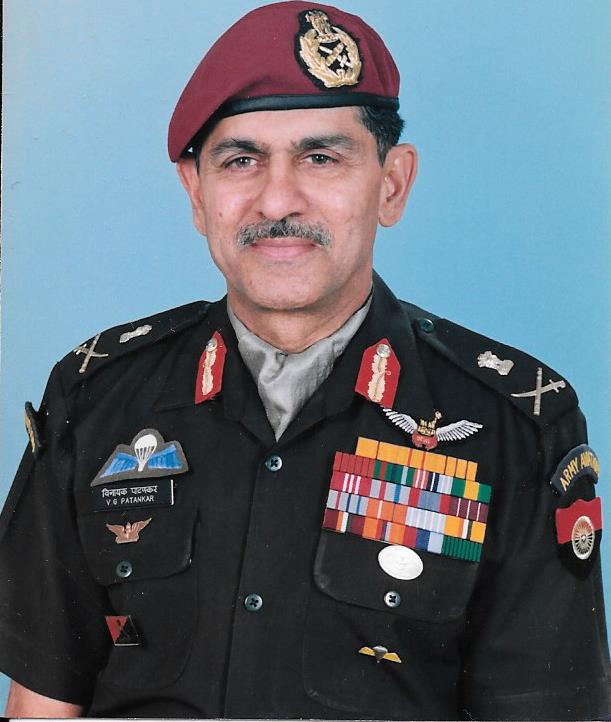To begin with, we must define what our aim is — do we want to deal a decisive, final blow to terrorism that comes from Pakistan or do we want to do the same to Pakistan?

Lt Gen Vinayak Patankar retd

Nearly two weeks after the horrific, targeted killing of defenceless tourists at Pahalgam, the dust has not yet settled to enable us to view the situation with clarity. The seething anger within our hearts is not abating. Though the single common emotion is revenge, its suggested method, modalities and manifestation vary. Public fora are full of views, opinions, recommendations, critiques, et al, depending upon the sources of their origin. But in the discussions, everyone seems to agree that the situation is more complex than what was perceived at first.
When faced with complex problems, it is a good idea to revisit the first principles and lessons of history. While principles bring to fore axioms, history can be a good reminder of events and lessons that ought to have been learnt from them.
Some of our fellow citizens see war clouds gathering, but the more informed minds look at many other options short of, or more effective than, war. It is often said that if one wants peace, one must prepare for war. It would do no harm, therefore, to see how some of the time-tested and proven principles of war could help us to see through the haze.
To begin with, we must define what our aim is — do we want to deal a decisive, final blow to terrorism that comes from Pakistan or do we want to do the same to Pakistan? This is vital as the measures to be taken for both would be quite different.
Offensive action could be physical or non-physical. Physical offensive must achieve surprise and it should be ensured that it is applied at the right time and at the right place. To that end, patience and level-headed planning and not knee-jerk reactions are the key. Non-physical actions, on the other hand, could be sustained over a long period and would generally be multi-pronged.
There is a need to apply sufficient force to ensure success, yet there is the principle of economy of effort to be kept in mind. To achieve the two seemingly contradictory requirements, concentrating the force at the point of decision is essential. That calls for mobility of assets and flexibility of plans. This is possible in both physical and non-physical offensive actions. The suspension of the Indus Waters Treaty (IWT) and the ban on mail and trade are two recent cases that exemplify the latter.
Sustainability of an offensive depends on several factors; principle among them is robust economy. Our economy is on an upward curve; nothing we undertake should hurt that progress. Keeping our economy secure could, therefore, be a term of reference for our planners.
Cooperation between all organs of the government is essential to achieve optimum results. Fortunately, given the state of high morale not only within all ranks of the armed forces but also among all our citizens, necessary cooperation would be readily forthcoming.
This is not the first time we are facing post-trauma complex challenges for decision-making at various levels and it most certainly would not be the last. In 1971, we faced not only an unbearable burden on our economy but also a grave national security concern arising from the influx of millions of refugees from the erstwhile east Pakistan. Acting on multiple fronts, like international diplomacy, political consensus and decisive military actions, we achieved a historic military victory over Pakistan. It was no hasty decision. The offensive was launched after waiting for many months of biding our time to select the right time and method and after full preparation.
We learn from our mistakes, too. Who can forget the episode when lapses in security, lack of coordination between departments and some questionable decision-making resulted in the hijack of an Indian Airlines flight to Kandahar and the release of jailed terrorists? We are now far better prepared against such threats.
Then, there have been the attacks on pilgrims of Amarnath Yatra, on Raghunath Temple, Akshardham and the Army camp at Kalu Chak and Pulwama. We have learnt and improved from each of them.
During the Kargil war, our leadership showed considerable statesmanship in keeping the conflict confined to a specified geographical area. In fact, the need to remain within our means and in control of the situation at all times brought about the concept of ‘limited war’.
In an adverse situation such as the one we have experienced recently, it is common to hear of ‘intelligence failure’. By holding someone or some agency accountable and placing the blame at its door, there is almost a sense of having nabbed the guilty. Before we indulge in any hasty blame game, we must remember two things. First, many such attacks are nipped in the bud by the security forces (SF) when ‘actionable intelligence’ is given to them by the intelligence apparatus. It is generally all in a day’s work for the SF and rarely, if ever, publicised. Next, the SF work round the clock, ready and hoping for action against terrorists. The terrorists, on the other hand, can select a time and place to strike — so they have to be lucky just once.
The jury is still out on the whys and wherefores of the Pahalgam attack. We are also not certain what the Pakistan army’s aim was in selecting an easy target in a cowardly, senseless attack. It could be to divert the attention of the Pakistan population from its recent failures in Balochistan and Khyber Pakhtunkhwa. Or, to hinder India’s economic progress, or to provoke us and lure us to walk into a trap — a massive ambush waiting to be sprung.
Till the truth is revealed, as it was in the case of the intrusions in Kargil in 1999, we need to keep our powder dry for action, keep a cool head, continue to apply economic squeeze and continue our ‘war by other means’, as Clausewitz would say!
Lt Gen Vinayak Patankar (retd) is ex-GOC, 15 Corps, Srinagar.










































































